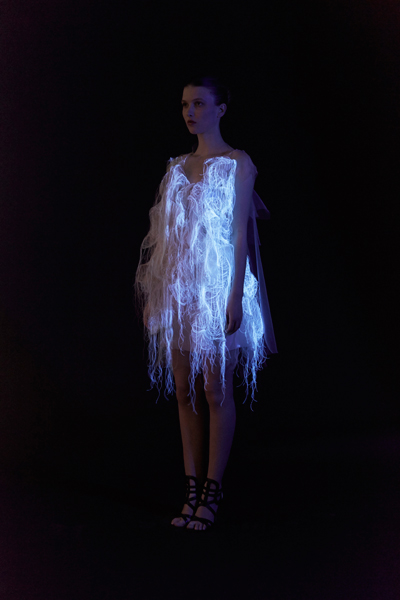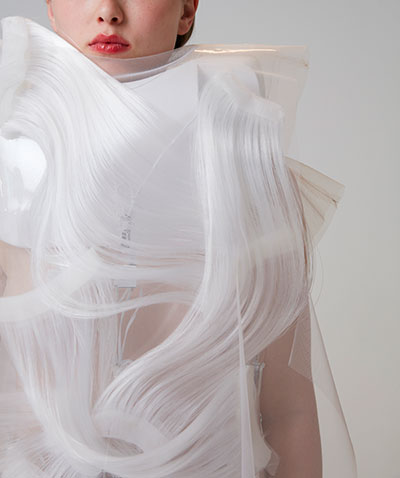This post was originally published on Luxiders
Fashion has gone out of style – the modern industry is chock full of faster fashion models, which have driven consumerist mentalities towards excess and greed rather than artistic integrity. Ying Gao is one of the many conscious designers taking a minimalist approach to the art of fashion – reminding us that fashion can be taken seriously, excitedly, and slowly.
To receive the Luxiders newsletter, sign up here.
Fashion in the early 1900s had a certain “je ne sais quoi”; there was a glimmer to its sartorial luxury; a becoming hip to its step. Business models were typically oriented around small scale reproductions – this was an era of meticulous craft, when a vision opened up flood gates to minimally obtainable, ethically produced pieces. In modernity, however, it seems a certain element of the affair has been lost – fashion has gone out of style, evolved into an industry that, as Dutch trend forecaster Li Edelkoort lays out, is “governed by greed and not by vision.” The flame of fashion past has been largely extinguished by its inherent commodification – fast fashion growth has been accompanied by a shift in consumer mentalities, as the industry narrative moves from one focused on craft and process to one which is inseparable from the over productive and consumptive ideals which it governs (and which, now, govern it). Overproduction has made fashion less valuable – we see decreased room for creativity, individualism, and expression (fast fashion brands solidify their holding through plagiarizing creatives, ripping off small brand designs and selling the reproductions at a fraction of the cost); overconsumption has trained us to divert our cravings towards excess – rather than to own a few pieces that are durable and ethically made, we often buy discounted pieces and more of them.
Amidst all the cheap sheens of feigned glamor, there have been some designers who have restored our broken faith in the industry, paving the way for a fashion revival in an increasingly parodied landscape. These designers approach the art of design differently than mainstream faster fashion brands – through innovative design, intentional sourcing of sustainable textiles, and conscious – often, in-house – methods of production. Rather than profit, these designers are focused on the personal art of their clothing and the construction thereof, leveraging social responsibility and material innovation with conceptual designs that inspire.
YING GAO, THE REVIVALIST DESIGNER
Montreal based designer, Ying Gao, is one such revivalist. Inspired by the transformation of social and urban worlds, many of Gao’s pieces have interactive components, allowing them to react to real-time changes in their internal and external environments. Through collaborations with artists and roboticists, Gao explores – in fine-tune detail – the construction of the garment, questioning modern assumptions about fashion and its role among consumers.
Take, for example, her 2019 Oliver Sacks inspired project “Flowing Water, Standing Time.” Similarly to the way Jimmie G, a 49-year old sailor who believes himself to be 19, lacks a sense of temporal continuity – continuously ricochetting between a version of his perceived self and actual self (the glimpse of his reflection in a mirror) – these garments evolve between two states, reacting visibly to the chromatic spectrum. Each dress is equipped with color and light sensors, as well as tiny cameras linked to a computer allowing the garments to collect and act on environmental data. Movement is generated when this data activates tiny magnets and actuators embedded in the fabric, giving the pieces a fluid, chameleon-like capacity.
30
Flowing Water, Standing Time
© Ying Gao
Another collection, (No)where (Now)here, features gaze-activated pieces, where garments – laced with photoluminescent threads and embedded eye-tracking technology – respond to variations in onlookers’ eye movements. When a spectator is staring at the garment, tiny motors within the fabrics cause the dress to writhe in a series of mesmerizing, observer-oriented patterns. In the dark, these pieces glow freely, with a light akin to bacterial demonstrations in open oceans.

30
(No)where, Now(here)
© Ying Gao
Possible Tomorrows, a 2017 undertaking, features two roboticized dresses linked to a finger recognition system. Developed from a series of pattern recognition algorithms, these garments are inspired by a notion of social eagerness and comradery – a “bypass[ing] of the notion of security,” – becoming animated only in the presence of strangers unrecognized by the system. In describing their fluid motion, Gao notes it “evoke[s] hypotrochoids, shapes borrowed from the vintage game Spirograph: their flattened curves are drawn by a single point linked to a mobile circle that rolls without sliding, on and inside of an initial circle.”

30
Possible Tomorrows
© Ying Gao
Although not commercially wearable, many of Ying Gao’s pieces demonstrate a conscious realism that has been lost to fast fashion mentalities and encourage us to rethink the way we produce and consume fashion. Gao’s minimalist agenda allows adequate space for creativity and intentional design, paving a way for a more sustainable approach to fashion in general.
Highlight Image:
@ Ying Gao
+ Words:
Tori Palone
Luxiders Magazine
Der Beitrag Ying Gao’s Interactive Designs | A Conscious Approach to Fashion erschien zuerst auf Sustainable Fashion – Eco Design – Healthy Lifestyle – Luxiders Magazine.





0 Comments